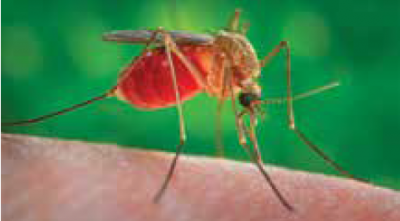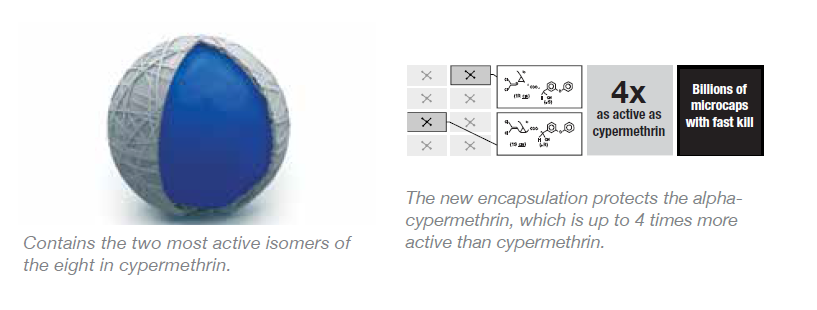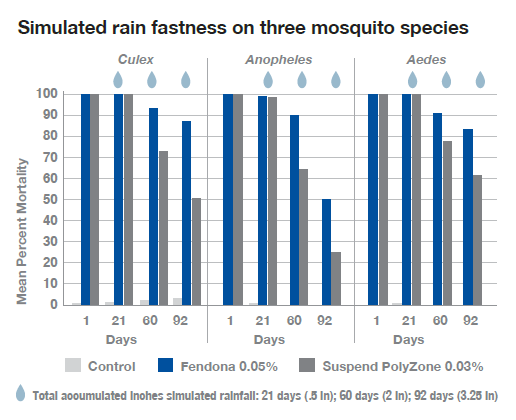
Health risks posed by mosquitoes
Mosquitoes vector malaria, Zika virus, encephalitis, West Nile virus, chikungunya and dengue fever among many other diseases. Aside from these serious health risks, the presence of mosquitoes is an annoyance to anyone who enjoys spending time outdoors.
Common mosquitoes in the U.S.
Over 150 species of mosquitoes have been identified in the U.S., but the three most significant genera are Aedes (yellow fever mosquito, Asian tiger mosquito), Culex (northern house mosquito, southern house mosquito) and Anopheles (common malaria mosquito).

Behavior
Most urban mosquito species stay close to their breeding area to feed. Some mosquitoes feed actively during the day (Asian tiger mosquito), while others are most active at night (common malaria mosquito).
When not feeding, adult mosquitoes rest in protected places, usually dark and damp areas with little air movement, which provides them with cover from the elements.
Mosquitoes can quickly locate humans and other warm-blooded animals as a result of their ability to perceive movement, sense heat and detect chemicals, such as odors and CO2 given off by humans and other animals.
Use Fendona CS insecticide against mosquitoes

Fendona CS insecticide offers an improved encapsulation process to provide enhanced residual control, virtually eliminating costly callbacks.
Economic and environmental sustainability
Fendona CS insecticide is an innovative formulation. It produces smaller particles with better rain fastness for broader coverage and more effective mosquito control. It also allows longer application intervals that reduce callbacks and labor costs.
Long residual for better protection
This is the reason leading professionals choose Fendona CS insecticide. Studies have shown it has up to 90-day residual control of mosquitoes on live plants and has better rain fastness than Suspend PolyZone (see chart).

FendonaTM CS controlled release insecticide mosquito application tips
Where should I spray for best results?
On Structure: Apply on outdoor surfaces of buildings, porches, window frames, eaves, patios, garages, garbage sheds and other areas where mosquitoes land or enter premises.
Off Structure: Treat shrubbery, vegetation and other areas where mosquitoes may rest. Don’t forget to treat structures creating flyways, such as the space between a shed and a wooden fence.
How should Fendona CS insecticide be applied?
With compressed air, backpack or power spray equipment.
Tip: When treating foliage, remember that leaves have two sides and mosquitoes generally rest on the underside. Deliver product deep into the more protected areas beneath the canopy where many mosquitoes rest, such as bark and branches.
Many PMPs use power misting blowers to optimize coverage and increase labor efficiency. When using blowers, it is recommended to use a 60 to 80 micron nozzle.
Power misting blowers are capable of producing small droplets that cling well to vertical or inverted surfaces, and the blower turns leaves over for excellent coverage.
What rate should be used for best results?
An application rate of 1.0 – 2.0 fl oz/gal is desirable. Apply fine mist to adequately cover the area being treated. Application should be made so that it limits dripping and run-off on structural surfaces and plants.
Tip: Leaves naturally shed heavy water. Using a low volume of water at a higher concentration is a good way to be sure that the Fendona CS insecticide capsules are not running off of the target site with excess water.
How often should I treat for mosquitoes?
Experience has shown that service programs with scheduled treatments every four to six weeks improve client satisfaction. Although mosquitoes will be killed if they land on treated surfaces, vegetation continues to grow and new surfaces are constantly emerging.
Other recommendations for sustaining customers
Establish realistic expectations for control.
Inspect for and eliminate larval breeding sites and resting sites on property.
The active ingredient of Fendona CS insecticide is recommended by WHO for malaria control
The combination of low dose requirements and a strong safety profile has placed the active ingredient of Fendona CS insecticide high on the World Health Organization’s (WHO) list of recommended insecticides for use against malaria-transmitting mosquitoes. The active ingredient of Fendona CS insecticide is the key ingredient in BASF’s Interceptor® bed nets as well, which are also recommended by WHO for use in malaria control. Long-lasting insecticidal nets such as these can reduce malaria illness by 90% in areas of high transmission.

